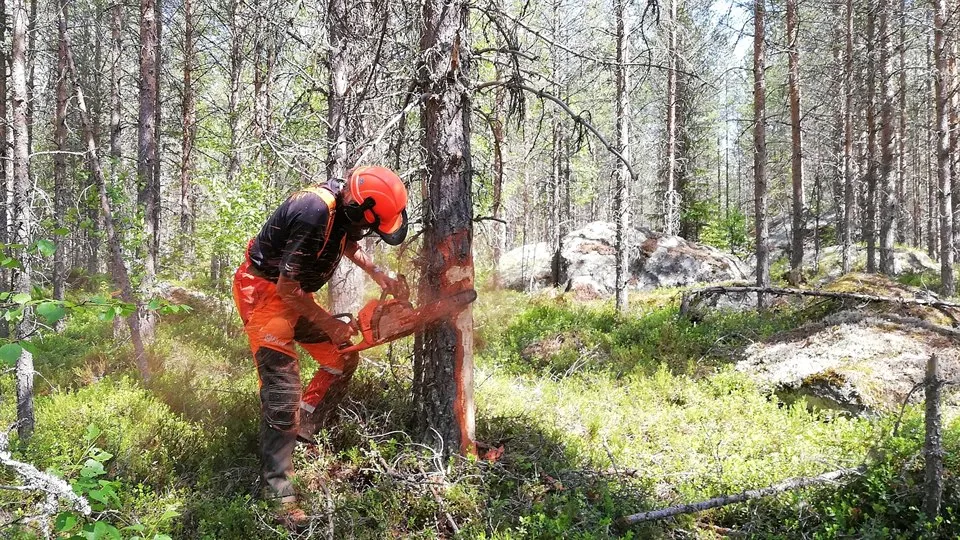Veteranisation of pine ‑ active management to create lost key elements for biodiversity in boreal forests
In this project we develop restoration methods to create ecologically important dead wood structures that are now very scarce in managed pine forests.
The aim of this project is to develop ecological restoration methods to create two crucial dead wood structures that are now very scarce in managed pine forests: kelo trees and hollow pine trees. Kelo trees are old, dead standing pine trees with heavily resin-impregnated wood, while hollow pine trees are pines that have lost their heartwood through decay by the fungus Phellinus pini. Both structures are long-lasting key elements for biodiversity and were once common features of European boreal forests. However, due to historical harvesting, fire suppression and short rotations they been almost completely lost in managed forests. Increasing their abundance would be a very important measure to promote a wide range of threatened species.
In this project we will evaluate several veteranisation methods to induce formation of these structures by deliberately damaging living pines. The main objectives are: 1) to evaluate the potential efficacy of creating kelo trees by mechanically wounding living pines; 2) to determine how and where restoration fires should be applied to promote fire scarring and initiate kelo formation in living pines; 3) to investigate how wood chemicals induced by fire scar formation influence diversity of fungi in dead wood; and 4) to develop effective methods to create hollow pine trees by inoculating living trees with the decay fungus P. pini.
The results will have clear and direct applications in the conservation management of boreal pine forests.
Facts
Project period
200101—221231
Partners
Subjects
Research groups
Project leader

Read more

